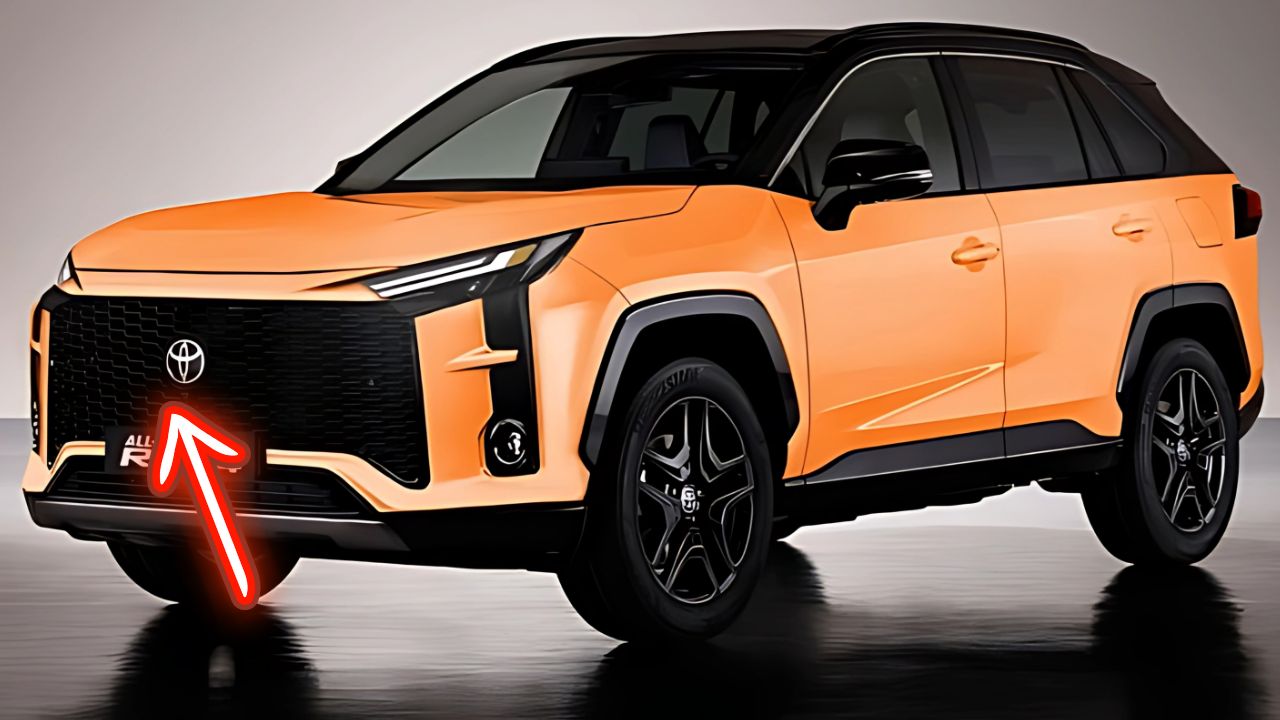There’s something genuinely compelling about watching a vehicle maintain its grip on the Australian market year after year, and the Toyota RAV4 has done exactly that with an almost effortless consistency. When May 2025 sales figures rolled in showing 4,003 units finding new homes across the continent, it wasn’t just another monthly statistic—it was confirmation of what many industry observers have suspected for years: the RAV4 has cracked the code for what Australian families truly want in their driveways.
Walking through any suburban shopping centre car park these days, you’ll inevitably spot multiple RAV4s scattered among the sea of vehicles. This isn’t coincidence; it’s the result of Toyota’s methodical approach to understanding exactly what makes Australian buyers tick. The decision to transition the RAV4 to a hybrid-only powertrain wasn’t just about following environmental trends—it was a calculated response to rising fuel costs and growing environmental consciousness among everyday consumers.
The Hybrid Revolution That Actually Worked
The automotive industry is littered with well-intentioned environmental initiatives that failed to resonate with real-world buyers. Remember when manufacturers pushed diesel variants as the eco-friendly option? Those days feel like ancient history now, especially when you consider how seamlessly the RAV4’s hybrid system has integrated into daily Australian life.
What makes the RAV4’s hybrid success particularly noteworthy is how unremarkable it feels to drive. This might sound like faint praise, but it’s actually the highest compliment you can pay to hybrid technology. The system delivers approximately 4.7 litres per 100 kilometres without requiring drivers to fundamentally change their habits or compromise on performance expectations.
Real-World Efficiency That Actually Matters
Those efficiency figures aren’t just laboratory numbers that look impressive on paper. During typical suburban driving conditions—the school run, weekend shopping trips, occasional highway cruising—the RAV4 consistently delivers fuel consumption that makes a meaningful difference to household budgets. For families covering 15,000 kilometres annually, the fuel savings compared to traditional petrol engines can easily amount to several hundred dollars yearly.
The hybrid system’s intelligence shines during stop-start traffic conditions that plague most Australian cities. While conventional engines waste fuel idling at traffic lights, the RAV4 seamlessly switches to electric power, creating a pocket of silence that feels almost luxurious in today’s noisy urban environment.
Why Australian Families Keep Choosing RAV4
Understanding the RAV4’s sustained popularity requires looking beyond mere sales statistics. Australian families aren’t just buying vehicles; they’re making complex decisions that balance practical needs, financial considerations, and lifestyle aspirations. The RAV4 succeeds because it addresses multiple priorities without forcing uncomfortable compromises.
The Practical Foundation
Australian families need vehicles that handle diverse terrain and weather conditions. The RAV4’s all-wheel-drive capability isn’t just about weekend adventures—it provides confidence during unexpected weather events, beach trips, and navigating poorly maintained suburban roads after heavy rainfall.
Storage capacity represents another crucial consideration. Modern families carry significantly more equipment than previous generations, from sporting goods and camping equipment to technology accessories and emergency supplies. The RAV4’s cargo area accommodates these realities without requiring Tetris-level packing skills.
Financial Sensibility in Uncertain Times
Vehicle purchases represent substantial financial commitments, particularly given current economic conditions. The RAV4’s strong resale value provides psychological comfort, knowing that future trade-in values remain robust. This financial security matters enormously when monthly household budgets feel increasingly stretched.
Maintenance costs also factor into long-term ownership satisfaction. Toyota’s reputation for reliability isn’t just marketing rhetoric—it translates into predictable service costs and minimal unexpected repairs. For families managing complex budgets, this predictability carries significant value.

The 2026 Game-Changer: Plug-in Hybrid Evolution
Toyota’s announcement of the 2026 RAV4 plug-in hybrid variant has generated considerable excitement among automotive enthusiasts and practical buyers alike. The addition of 227 kilowatts of combined power output represents a substantial performance upgrade while maintaining the efficiency focus that made the standard hybrid so successful.
Performance Meets Efficiency
The plug-in hybrid system promises to transform the RAV4 driving experience without abandoning the practical qualities that attracted families initially. With 227kW available, acceleration will become genuinely brisk rather than merely adequate, addressing one of the few criticisms levelled at current models.
All-wheel-drive capability remains standard, ensuring that performance improvements don’t compromise the vehicle’s versatility. This combination of power and traction should appeal to buyers who previously felt forced to choose between efficiency and driving enjoyment.
Electric Range for Daily Commuting
While official electric-only range figures await confirmation, plug-in hybrid technology typically provides sufficient battery capacity for average daily commuting distances. This capability means many owners could complete routine errands and work commutes using electricity alone, relegating petrol consumption to longer journeys.
For Australian suburbanites, this represents a significant advancement. Most daily driving occurs within relatively short distances—school drops, local shopping, nearby recreational activities. The ability to complete these trips electrically while retaining petrol backup for longer journeys addresses range anxiety concerns that still affect pure electric vehicle adoption.
Market Position and Competition Landscape
The RAV4’s success hasn’t occurred in isolation. Australia’s SUV market has become increasingly competitive, with manufacturers launching hybrid variants across multiple segments. However, the RAV4’s early commitment to hybrid technology has created advantages that competitors struggle to match.
First-Mover Advantages
Toyota’s hybrid expertise, developed over decades of Prius production, translated seamlessly into SUV applications. While competitors scrambled to develop hybrid systems, Toyota refined and perfected their technology through real-world application across millions of vehicles globally.
This experience shows in the RAV4’s seamless operation. The transition between electric and petrol power occurs so smoothly that many drivers forget they’re operating hybrid technology. Such refinement takes years to develop and represents a significant competitive advantage.
Brand Trust and Reliability Perceptions
Australian consumers maintain strong loyalty to brands that consistently deliver reliable service. Toyota’s reputation, built over decades of dependable vehicles, provides a foundation that newer market entrants cannot easily replicate. When families invest in major purchases like vehicles, brand trust significantly influences decision-making processes.
The RAV4 benefits from this accumulated goodwill while offering genuinely advanced technology. This combination of trusted reliability and modern innovation creates a compelling value proposition that resonates strongly with practical Australian buyers.
Environmental Impact and Social Responsibility
Beyond individual benefits, the RAV4’s hybrid adoption contributes to broader environmental improvements across Australia’s vehicle fleet. Each hybrid vehicle sold represents reduced emissions compared to conventional alternatives, multiplying environmental benefits across thousands of individual purchasing decisions.
Gradual Transition Strategy
The RAV4’s approach represents a practical pathway toward widespread electrification. Rather than requiring dramatic infrastructure changes or lifestyle modifications, hybrid technology provides immediate environmental benefits while maintaining familiar ownership experiences.
This gradual approach suits Australian conditions particularly well. Our vast distances and developing charging infrastructure make pure electric vehicles challenging for many buyers. Hybrid technology bridges this gap, providing environmental benefits without range limitations that concern many potential buyers.
Future Outlook and Market Predictions
Looking ahead, the RAV4’s position appears secure given current market trends and consumer preferences. The upcoming plug-in hybrid variant should attract buyers seeking enhanced performance while maintaining efficiency focus. This expanded range strategy allows Toyota to capture market segments that might otherwise consider alternative brands.
Technology Integration and Connectivity
Future RAV4 models will likely emphasize technological integration as younger buyers prioritize connectivity features. However, Toyota’s challenge involves incorporating advanced technology without overwhelming buyers who appreciate the current model’s straightforward operation.
The balance between innovation and simplicity represents a crucial consideration for maintaining broad market appeal. Families want modern convenience features but often prefer intuitive operation over complex technological showcases.
Frequently Asked Questions
What is the fuel consumption of the Toyota RAV4 hybrid? The Toyota RAV4 hybrid achieves approximately 4.7 litres per 100 kilometres under typical driving conditions, making it one of the most fuel-efficient SUVs in its class.
When will the 2026 Toyota RAV4 plug-in hybrid be available in Australia? Toyota hasn’t announced specific Australian availability dates for the 2026 RAV4 plug-in hybrid, but it’s expected to arrive in local showrooms during the second half of 2025 as a 2026 model year vehicle.
How much power does the new RAV4 plug-in hybrid produce? The upcoming 2026 RAV4 plug-in hybrid variant will deliver 227 kilowatts of combined power output from its hybrid powertrain, significantly more than the current hybrid model while maintaining all-wheel-drive capability.

